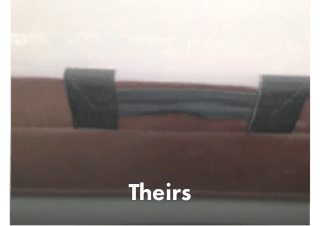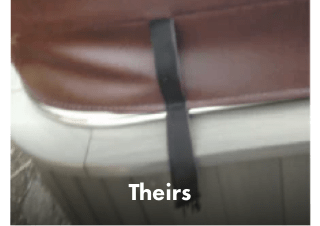30 Tips to Extend the Life of Your Hot Tub Cover
Your hot tub cover is its first line of defense against sun, rain, and wear—but without proper care, it can crack, fade, or lose insulation power. Want to avoid costly replacements and boost energy efficiency? Discover 30 expert-backed tips to extend your cover’s lifespan by years. Learn how to combat UV damage, prevent mold, seal leaks, and shield against chemical corrosion. From quick cleaning hacks to weatherproofing strategies, this guide unlocks actionable steps to keep your cover durable, snug, and visually appealing season after season. Save money, conserve heat, and enjoy peace of mind with smarter maintenance!
1. Clean weekly with mild soap
Weekly cleaning removes oils, sweat, and debris that degrade vinyl over time. Use a soft cloth or sponge with diluted dish soap to avoid abrasion. Rinse thoroughly to prevent soap residue, which can attract dirt and weaken the cover’s UV resistance. Consistent cleaning prevents premature cracking and discoloration.
2. Avoid harsh chemicals
Harsh cleaners like bleach, ammonia, or acidic solutions strip the vinyl’s protective coating, leading to brittleness. Use pH-neutral cleaners formulated for vinyl to maintain flexibility. Avoid abrasive scrubs or solvents, which can fade colors and erode seams, shortening the cover’s lifespan.
3. Condition the vinyl monthly
Apply a UV-resistant vinyl conditioner to replenish oils lost to sun and weather. Conditioning prevents drying, cracking, and fading by forming a protective barrier. Focus on high-stress areas like folds and seams. Regular conditioning keeps the material supple and resistant to environmental damage.
4. Use a specialized cover cleaner
Specialty cleaners dissolve grime without harming the vinyl or foam core. Unlike household products, they’re designed to preserve waterproof seals and prevent residue buildup. Follow manufacturer instructions to avoid over-saturating the cover, which can lead to mold growth in the insulation.
5. Dry thoroughly before closing
Trapped moisture under the cover breeds mold, mildew, and rot. After cleaning or rain, wipe the surface with a microfiber cloth and prop the cover open briefly to air-dry. Ensure no water pools in creases, as this weakens stitching and insulation over time.
6. Apply UV protectant spray
UV rays break down vinyl polymers, causing fading and cracks. A UV protectant spray (applied every 3–6 months) reflects sunlight and blocks oxidation. Reapply after heavy rain or cleaning to maintain a consistent protective layer, especially in sunny climates.
7. Use a cover cap
A waterproof cover cap adds an extra shield against UV rays, rain, and snow. It reduces wear on the primary cover and prevents debris accumulation. Choose a breathable, lightweight cap to avoid trapping moisture underneath, which could cause condensation damage.
8. Install a wind strap
High winds can warp the cover or tear it from the tub. Secure it with adjustable straps or bungee cords anchored to the tub’s frame. This minimizes flapping, which strains seams and accelerates wear during storms.
9. Remove snow buildup
Heavy snow adds weight that strains hinges and compresses insulation. Gently sweep snow off with a soft broom—never use sharp tools or hot water, which can tear vinyl or cause thermal shock. Prevent ice dams by keeping the cover slightly tilted.
10. Store indoors during extremes
In hurricanes, hail, or extreme heat, relocate the cover to a garage or shed. Prolonged exposure to harsh conditions can crack vinyl, warp foam, or damage hinges. If storage isn’t possible, use a heavy-duty tarp as temporary protection.
11. Invest in a cover lifter
A lifter reduces strain on hinges and prevents dragging the cover across rough surfaces. Choose a hydraulic or rail-mounted model to distribute weight evenly. Improper handling without a lifter can bend hinges or tear the vinyl at stress points.
12. Avoid standing/sitting
The foam core isn’t designed to support weight. Sitting or standing compresses the insulation, creates permanent sagging, and stresses seams. Even light pressure from pets or objects can weaken the structure—keep the cover clear at all times.
13. Use a support bar
A support bar under the center prevents water from pooling, which stretches vinyl and strains stitching. Adjustable bars can be tightened to maintain the cover’s dome shape. This also improves insulation efficiency by ensuring a snug fit.
14. Lift with two people
Large covers are awkward to handle alone, risking uneven lifting that twists hinges or tears handles. Two people can balance the weight, preventing warping and prolonging the life of hinges and straps. Never drag the cover—lift straight up.
15. Flip the cover seasonally
Sun exposure affects the top side more than the bottom. Flipping the cover every 3–6 months distributes UV damage evenly. This also allows you to inspect and clean the underside, which accumulates condensation and chemical residues.
16. Balance hot tub chemicals
Over-chlorinated or imbalanced water releases corrosive gases that degrade the cover’s underside. Test water weekly and maintain pH levels (7.2–7.8) to prevent off-gassing. Use a floating dispenser to avoid direct chemical contact with the cover.
17. Use a floating blanket
A thermal blanket reduces evaporation, minimizing moisture and chemical exposure under the cover. It also improves heat retention, reducing the tub’s energy use. Ensure the blanket fits snugly to avoid folds that trap condensation.
18. Wipe off chemical spills
Splashed chlorine or shock treatments can bleach vinyl or cause warping. Immediately rinse spills with fresh water and blot with a cloth. Never let chemicals sit on the surface—they can penetrate seams and damage the foam core.
19. Replace the vapor barrier
The vapor barrier (a plastic layer inside the cover) prevents moisture from seeping into the foam. If cracked or brittle, replace it promptly to avoid waterlogged insulation, which causes mold, odor, and reduced heat retention.
20. Trim nearby trees
Overhanging branches drop leaves, sap, and twigs that stain or puncture the cover. Trim foliage at least 10 feet away. Use a protective cover during fall to catch debris and reduce cleaning frequency.
21. Keep pets away
Pet claws can scratch vinyl, while chewing damages edges. Train pets to avoid the tub or install a removable fence. For households with pets, consider a reinforced cover with puncture-resistant material.
22. Avoid sharp objects
Remove jewelry, keys, or tools before handling the cover. Even small punctures allow water ingress, leading to insulation damage. Store sharp items away from the tub area and inspect the ground for debris before opening/closing.
23. Inspect seams monthly
Check stitching and seams for fraying, gaps, or loose threads. Use a vinyl repair kit to seal minor tears before they expand. Reinforce high-stress areas like corners with adhesive patches to prevent water penetration.
24. Check for proper fit
A poorly fitting cover strains locks and allows heat loss. Measure your tub annually—covers can shrink or warp over time. Replace worn weatherstripping or adjust straps to ensure a snug, gap-free seal.
25. Clean the underside
Condensation and chemical vapors leave residue on the cover’s underside. Wipe monthly with a 1:1 vinegar-water solution to dissolve buildup and inhibit mold. Dry completely to prevent moisture from compromising the foam core.
26. Tighten straps moderately
Over-tightened straps warp the cover’s shape, creating gaps that let in debris and cold air. Adjust straps to hold the cover firmly without compressing the foam. Check tension seasonally as temperature changes affect vinyl elasticity.
27. Waterproof annually
Apply a silicone-based waterproofing spray to maintain the cover’s ability to repel water. Focus on seams and folds where water penetrates most. This prevents absorption, which adds weight and strains hinges while reducing insulation efficiency.
28. Lower temps when unused
High heat softens vinyl and accelerates wear. Lower the tub temperature to 80–90°F when not in use for extended periods. This reduces thermal stress on the cover and saves energy.
29. Use a dehumidifier
In enclosed spaces, high humidity promotes mold growth and vinyl deterioration. A dehumidifier maintains 40–50% humidity, protecting the cover’s materials and surrounding tub components. Position it near the tub but avoid direct airflow onto the cover.
30. Schedule professional inspections
A technician can identify hidden issues like core degradation, hinge wear, or seal failure. Annual inspections catch problems early, preventing costly replacements. They’ll also test insulation efficiency and recommend repairs tailored to your climate and usage.
By dedicating time to these steps, you’ll combat sun, moisture, chemicals, and physical stress—ensuring your cover stays durable, efficient, and visually appealing for years.
Our Quality
It is easy for a website to claim they have the best quality but at MySpaCover we guarantee it. We utilize only the highest quality materials and the most sophisticated processes to offer the best covers available online. Here is how our covers compare to the competition:
MYSPACOVER

Our heavy-duty handles come standard and are double stitched using marine grade vinyl to ensure the highest durability and most attractive aesthetics.

Our standard straps are double stitched and are also produced with marine-grade vinyl.

We double stitch every seam and hinge to ensure your spa cover can be used for years to come.
Other Guys

Their cheap handles are more prone to wear and tear and are known to rip off within the first two years plus the appearance speaks for itself.

Our competition uses low-quality straps that are prone to breakage and often times do not match the color of the spa cover.

Their use of single stitching and exposed shells can ultimately cause cracking and heat loss, costing you more on your electric bill.
The Underside
The underside of a spa cover is often overlooked. However, this is the material that is in constant contact with high temperatures and the chemicals in your spa. The life of your spa cover depends on a high-quality spa underside. We don’t cut corners like the other guys so you can trust that our 6 mil plastic wrap is vapor sealed to the core and will keep the heat out.
MySpaCover utilizes an 11oz PVC coated poly that, after years of rigorous testing, has proven to be the best possible material to withstand constant high temperates and chemical exposure.
Beware of mesh bottoms used by competitors as this type of material is meant to cut costs and is prone to failure.